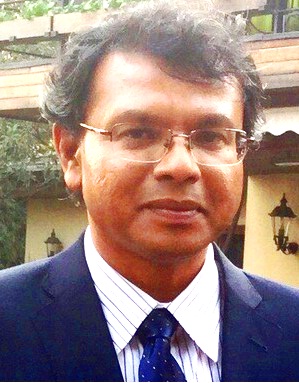 Dr. Shamsuddin Shahid is a Professor in the Department of Water and Environmental Engineering in the School of Civil Engineering of Universiti Teknologi Malaysia (UTM). He is one of the World’s 1000 most influential climate scientists reported by Thomson-Reuters in 2021. He has also been ranked among the World’s top 2% scientists in Atmospheric Research by Stanford University in 2020. Dr. Shahid obtained his PhD from the Indian Institute of Technology-Kharagpur (India) in 2001. He completed his postdoctoral research at Friedrich-Schiller University of Jena-Germany in 2007-08 under Alexander von Humboldt Fellowship Program. He also worked as a postdoctoral research fellow at the Asian Institute of Technology – Thailand in 2005.
Dr. Shamsuddin Shahid is a Professor in the Department of Water and Environmental Engineering in the School of Civil Engineering of Universiti Teknologi Malaysia (UTM). He is one of the World’s 1000 most influential climate scientists reported by Thomson-Reuters in 2021. He has also been ranked among the World’s top 2% scientists in Atmospheric Research by Stanford University in 2020. Dr. Shahid obtained his PhD from the Indian Institute of Technology-Kharagpur (India) in 2001. He completed his postdoctoral research at Friedrich-Schiller University of Jena-Germany in 2007-08 under Alexander von Humboldt Fellowship Program. He also worked as a postdoctoral research fellow at the Asian Institute of Technology – Thailand in 2005.
Dr. Shamsuddin Shahid is in academia for nearly 25 years. The major research interest of Dr Shahid is climate variability and changes and their impacts on water resources. He uses climate data collected from different sources to assess historical changes in climate and global climate model simulations for future climate projection. He has expertise in both physically-based and data-driven models to simulate climate and hydrological processes. He developed several innovative methods for characterisation and forecasting climate and water scarcity. He also studied hydrological hazard risk and its changes due to global environmental change in different countries of Asia and Africa.
Dr. Shamsuddin Shahid is the author of nearly 400 peer-reviewed articles in reputed international journals (indexed in Web of Science). The total citation of his research articles is 20252 (H-index: 81) in Google Scholar and 14233 (H-index: 68) in Scopus. He supervised 15 PhD and four postdoctoral research and completed 20 national and international research projects as principal investigator. He is the editors of several reputed journals, including Earth Systems and Environment (Springer), KSCE Journal of Civil Engineering (Elsevier), PLOS One and PLOS Climate.
Pingback: Future precipitation changes in Egypt – MedECC